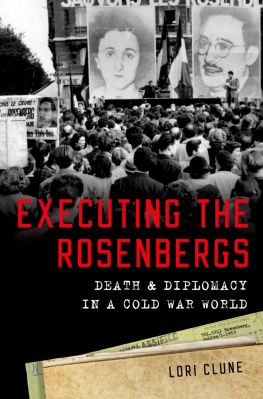Broadway in the 1860s (Courtesy of New-York Historical Society)
Henry Clapp Jr. (Courtesy of special collections, Fine Arts Library, Harvard University)
Ada Clare (Courtesy of the Bancroft Library, University of California, Berkeley)
Whitman, 1854 (Courtesy of the Library of Congress)
Whitman frontispiece from Leaves of Grass 1860 edition (Courtesy of New York Public Library)
Leaves of Grass title page (Courtesy of New York Public Library)
Whitman at Pfaffs (Courtesy of Harpers Magazine )
Menken reclining (Courtesy of collection of Houghton Library, Harvard University)
Menken in Mazeppa (Courtesy of Victoria and Albert Museum)
Fitz Hugh Ludlow (Courtesy of special collections, Schaffer Library, Union College)
Artemus Ward (Courtesy of special collections, Fine Arts Library, Harvard University)
Abraham Lincoln (Courtesy of the Library of Congress)
Mark Twain (Courtesy of the Library of Congress)
Harpers meteor cover (Courtesy of Texas State University)
Armory Square Hospital (Courtesy of the Library of Congress)
Whitman and Doyle (Courtesy of the Library of Congress)
Edwin Booth (Courtesy of the Library of Congress)
Booth brothers (Courtesy of Brown University archives)
Julius Caesar playbill (Courtesy of New York Public Library for the Performing Arts/Billy Rose Theatre Division)
Whitman as good gray poet (Courtesy of the Library of Congress)
All other photos are in the public domain.
TAKE A WALK ALONG Broadway in Manhattan. As you make your wayamid the rushing taxis, pedestrians lost in their smartphones, and other scenes of modern bustleyou might just catch some hints of the distant past. Pause for a moment at 647 Broadway, a few doors north of Bleecker Street. A womens shoe store is here, assorted boots, sandals, and stiletto heels displayed in the window. It appears to be just another shop along Broadway. But once upon a time, this was the location of the famous Pfaffs saloon.
To be precise, Pfaffs (pronounced fafs ) was beneath where the shoe store is now. It was an underground saloon in every sense of the word. Theres still a hatchway in the Broadway sidewalk, just as there was in the nineteenth century. It provides entry into the stores basement, a long, narrow space, lit by electric bulbs and piled high with boxes of shoes. During the 1850s, it was dim, gaslit, and packed with artists. Pfaffs saloon was the site of an incredibly important cultural movement, the meeting place of Americas first Bohemians.
Their leader, Henry Clapp Jr., was editor of the hugely influential Saturday Press . Clapp deserves credit as the person who brought Bohemianism to America, both the word and the way of life. He was joined by a struggling experimental poet, well into middle age, yet still living at home in Brooklyn with his mother, Walt Whitman.
Around these two figures, a circle formed that included journalists, playwrights, sculptors, and painters. Among the mainstays were Artemus Ward, Americas first stand-up comedian, and the elegant writer Ada Clare (libertine Pfaffs was the rare saloon that welcomed women in those days). There was also Fitz Hugh Ludlow, psychedelic pioneer and author of The Hasheesh Eater; Fitz-James OBrien, a talented but dissolute writer; and actress Adah Isaacs Menken, wildly successful, unabashedly notorious, and one of the great sex symbols of the nineteenth century. By turns calculating and vulnerable, she was like a sepia-tone Marilyn Monroe.
On the eve of the Civil War, this motley group made the Broadway saloon its headquarters. The Pfaffs Bohemians, as they were known, met here every night to drink, joke, argue, and drink some more. Along the way, they also managed to create startling and original works. Although much of their output is long forgotten, its animating spirit lives on, continuing to have resonance today. The Pfaffs Bohemians were part of the transition from art as a genteel profession to art as a soul-deep calling, centered on risk taking, honesty, and provocation. Everyone from Lady Gaga to George Carlin to Dave Eggers owes a debt to these originals. They were also the forerunners of such alternative artist groups as the Beats, Andy Warhols Factory, and the abstract expressionist painters who hung out during the 1950s at New Yorks Cedar Tavern.
If youve never heard of Pfaffs saloon, or its coterie of Bohemian artists, thats not surprising. More than 150 years have elapsed since this scenes heyday, and time moves in mysterioussometimes heedlessways. History is not a meritocracy. To reconstruct the lives of Clapp, Ludlow, Menken, and the members of the circle, I did a vast amount of original research, consulting correspondence, contemporaneous newspaper accounts, and old books. Many of these materials were yellowed and musty, yet what began to strike me most was the aliveness of my subjects. It shone through. The more I pursued this cast of long-lost artists, in libraries and archives, the more their time seemed to resonate with our own. I felt an obligation to revive them by telling their stories.





















